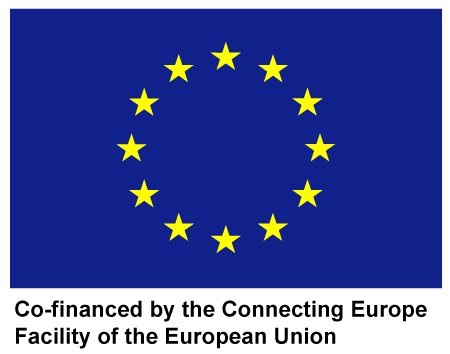
Cooperative Urban
Mobility Portal
Explore Connected and Cooperative Mobility

Cooperative
Urban Mobility Portal
Explore Connected and Cooperative Mobility
Road Hazard Warning (RHW)
The Road Hazard Warning service aims to inform the drivers in a timely manner of upcoming, and possibly dangerous events and locations. This allows drivers to be better prepared for the upcoming hazards and make necessary adjustments and manoeuvres in advance.
Participating actors in Road Hazard Warning are vehicle drivers who receive hazardous location information on the in-vehicle display, road operators who may signal the existence of a hazardous location, Service Providers who disseminate the hazardous location information to vehicle drivers, and other organizations charged with repair, maintenance and/ or cleaning may act on the hazardous location information.
The objective of Road Hazard Warning is to provide timely in-vehicle driving assistance information on hazardous locations downstream of the current position and in the driving direction of the vehicle.
Invisible
Your content goes here. Edit or remove this text inline or in the module Content settings. You can also style every aspect of this content in the module Design settings and even apply custom CSS to this text in the module Advanced settings.
Business models
Invisible
Your content goes here. Edit or remove this text inline or in the module Content settings. You can also style every aspect of this content in the module Design settings and even apply custom CSS to this text in the module Advanced settings.
Architecture
ITS-G5
In case of ITS-G5 communications, the information originates at data providers, who could be a Traffic Management system (TMS), but also a data sharing platform when information is crowdsourced by a community as is common for road hazards. Service providers then read this data and transforms it to C-ITS standards, which means encapsulating the information in DENM messages. Service providers push the data to communication providers. A Road Side Unit (RSU) in the relevant area receives the information and broadcasts the messages. These messages will be picked up by On Board Units (OBUs).
Cellular
In case of cellular communications, the information originates at data providers, who could be a Traffic Management system (TMS), but also a data sharing platform when information is crowdsourced by a community as is common for road hazards. Service providers then read this data and transforms it to C-ITS standards, which means encapsulating the information in DENM messages. Service providers push the data to communication providers. The information gets directly forwarded to Personal Information Devices (PIDs) in the relevant area to display to the end-users.
Invisible
Your content goes here. Edit or remove this text inline or in the module Content settings. You can also style every aspect of this content in the module Design settings and even apply custom CSS to this text in the module Advanced settings.
Architecture schema
Detailed information about Road Hazard Warning architecture can be found here.
Invisible
Your content goes here. Edit or remove this text inline or in the module Content settings. You can also style every aspect of this content in the module Design settings and even apply custom CSS to this text in the module Advanced settings.
Within the C-MobILE project the Road Hazard Warning service is implemented in all eight Deployment Sites: Barcelona, Bilbao, Bordeaux, Copenhagen, Newcastle, North Brabant, Thessaloniki, and Vigo.
Invisible
Barcelona
In Barcelona the Road Hazard Warning service is based on cellular communication technology. This service covers the entire city, including its main access roads, providing real-time information about different hazards (such as congestions, accidents, vehicle breakdowns, weather conditions, etc.) and their location. Applus IDIADA is the service provider receiving the information from the mobility databases of the City Council, Servei Català de Trànsit and RACC and providing it to the drivers through an App.
Invisible
Bilbao
In Bilbao the Road Hazard Warning service is implemented using cellular communication technology. The service is available in the urban road network. CEIT is the service provider cooperating with Bilbao OpenData Platform and Traffic Management Centre for road hazard data provisioning. NeoGLS is the App provider for this service providing users with real time information.
Invisible
Bordeaux
Invisible
Copenhagen
Invisible
Newcastle
Invisible
North Brabant
Invisible
Thessaloniki
Invisible
Vigo




This website has received funding from the European Union’s Horizon 2020 Research and Innovation Programme
under Grant Agreement number 723311.
